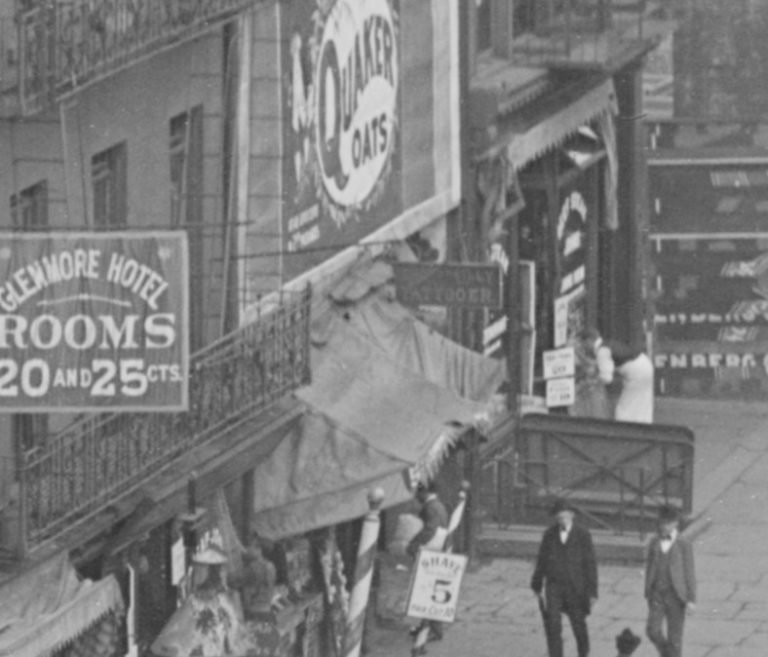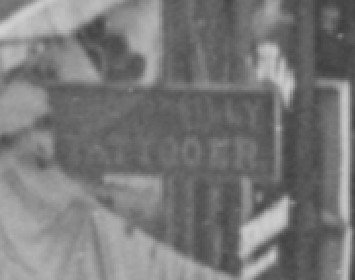Samuel O'Reilly and the Tattoo Machine
by Laura Molina, Alejandra Mourin and ChatGPT
Do you know who Samuel O’Reilly is? Well, mark December 8, 1891, on your tattoo timeline because that is when O'Reilly became the first person to patent an electric tattoo machine. But, we are rushing, let’s better start from the beginning.
Samuel O’Reilly was born in Connecticut in 1854, the son of Irish immigrants. He enlisted in the Navy in 1875, briefly. Had, let's call it, "discrepancies with the law" as early as 1873 and kept at it for a few years until he reemerged in New York in the mid-1880s as Professor O'Reilly, a well-recognized tattoo artist.
Now, when exactly did he learn the craft of tattooing? That part, as usual, is a bit unclear. Tattoo historian, Carmen Nyssen, mentions a February 1, 1898, article from the New York Evening Post, where O'Reilly is identified as an apprentice to Martin Hildebrandt, also known as “Old Martin.” Others claim he picked up tattooing skills in the Navy, where tattoos had already caught on among American servicemen. Here’s what we do know: by 1887, he had set up shop at #5 Chatham Square and stayed there until 1904 before moving to #11 Chatham Square.
New York Tattoo Shops: 5 & 11 Chatham Square by Carmen Nyssen
Detroit Publishing Co., Publisher. [Chatham Square, New York City, N.Y]. Photograph. Retrieved from the Library of Congress, <https://www.loc.gov/item/det1994014112/PP/>.
O'Reilly tattooed a few sideshow stars like Emma DeBurgh, who was quoted in an English paper in 1890 stating that “Prof. O'Reilly was the best tattoo artist and a perfect gentleman”. He also tattooed performers like Tom Sidonea and George Melivan, who proudly displayed their electrically tattooed bodies. Soldiers remained a steady clientele for tattoo artists at this time, and rumor has it that O'Reilly even made “house calls” to aristocrats too high-profile to visit his shop on Chatham Square.
1890 Jan 18 The Era (London) pg. 21
So yes, in 1891 Samuel O'Reilly was the first to patent an electric tattoo machine, but he wasn’t the only one experimenting. By the mid-1880s, electric motors were widely available, sparking new applications in handheld devices, like tattooing. Around the end of 1889, another tattoo artist, "Professor John Williams," traveled to England and demonstrated his own electric tattoo device, tattooing his wife, Madame Ondena, for intrigued museum audiences. Williams credited this machine as a collaboration between himself and Professor O'Reilly from New York. In 1898 O'Reilly explained in an interview that he experimented with both Bonwilll dental plugger and Edison mechanical pen before settling with his patent. This machine is likely the same device he used to tattoo George Kelly (Karlavagn), the “Electrically Tattooed Man,” whose back displayed the words “Tattooed by O'Reilly.” His patent (US464,801) even acknowledged these earlier tools, stating his was an “improved” tattoo machine.
Dentist’s Electromagnetic mallet. Ingram, J.S. The Centennial Exposition. Hubbard Bros., 1876. pg. 300. Print. Collection of Carmen Nyssen.
A fair stop...
It’s only fair to give credit to William Gibson Arlington Bonwill, credited with inventing the first electromagnetic dental plugger and, with it, the first electrically powered handheld device. As you can see in the picture above, nothing big, just another tattoo machine. Even Bonwill recognized the versatility of his invention, stating in his patent that it could be adapted for more than tooth fillings. In fact, according to Nyssen, an 1884 exhibition report noted that Bonwill’s machine had already been adapted for engraving, sculpting, and even as an early autographic pen.
Karlavagn, Tattooed by O’Reilly. The Illustrated American. Nov 8, 1890. pg. 365. Print.
So what modifications Samuel did to Edison’s electric pen? Essentially, he added an ink reservoir, a new tube assembly, and made adjustments to hold multiple needles. Funny enough O'Reilly's patent was initially rejected multiple times —not due to its similarity to Edison’s pen, but because of other overlapping inventions. How did he manage to secure the patent despite these hurdles? Certainly not alone. It is believed that English machinist, inventor, and mechanical illusionist, John Feggetter Blake, played a role in helping him build the machine. Although both Blake and John Williams may have assisted O'Reilly, only his name appears on the patent, showcasing his persistence and determination in bringing the tattoo machine to life.
As an inventor, you can use existing patents, but you most prove your creation is novel and distinct and this is not an easy task. Probably another reason why there is no other patent for tattoo machines, this plus the fact that all 1920s abandoned patent applications have been destroyed.
National Archives at Kansas City. Application. Tattooing Machine. Samuel F. O’Reilly, assignee. Patent 464801. 8 Dec. 1891. Print.
So what happened with the famous tattoo machine? Did O'Reilly get rich? Not quite.There's no evidence suggesting this machine was ever mass-produced. In fact, O'Reilly himself claimed he only made a few, selling two or three and keeping the rest. It seems that O'Reilly and other tattoo artists continue exploring and improving tattoo machines even after his patent came through. Why do we think this? Well, because all the visual records of mechanical tattoo machines that we have don’t actually match O'Reilly’s patent.
‘So far, neither a working example of O’Reilly’s patent model, nor a photo of one has surfaced. Nevertheless, a straight-handled adaptation of the Edison pen is depicted in a number of media photos. For years, this machine has been a source of confusion. The obvious stumper is the missing crooked tube assembly. Ironically, the absence of this feature is a clue in itself. It indicates there was another way to render the Edison pen operable for tattooing.
Early Tinkerers of Electric Tattooing. Carmen Nyssen
The Electric Tattooing Needle. Scientific American, Sept 12, 1903. pg. 189. Print.
New Yorkers Adopt a Startling Fad. New York World, Aug 29, 1897: pg. 28. Print.











